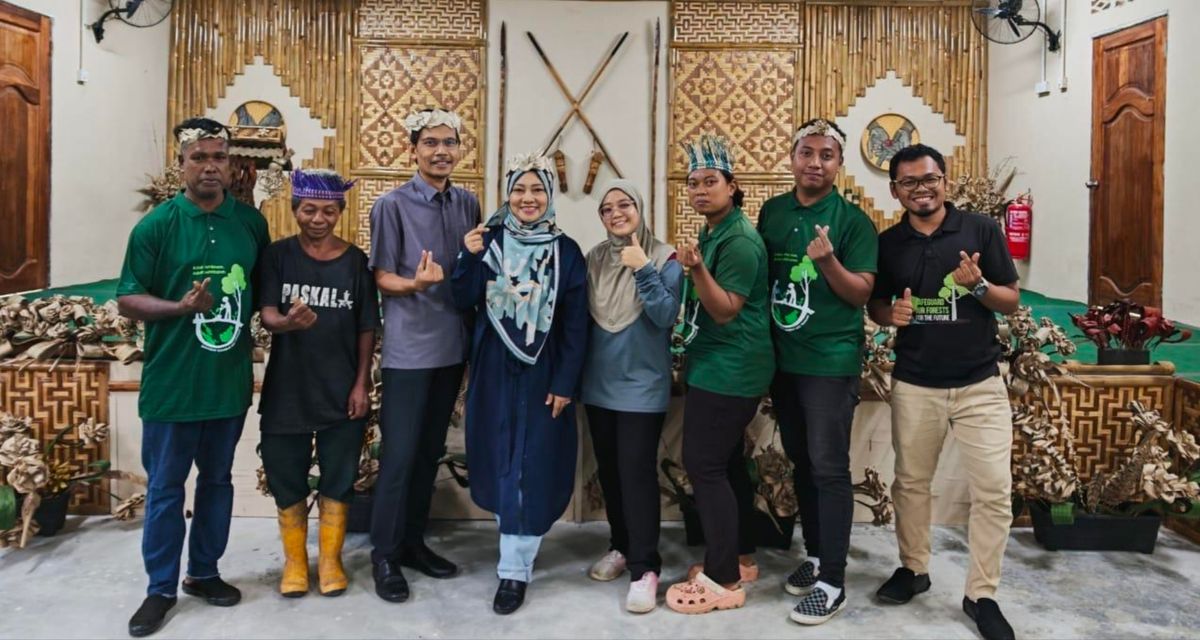
On 28 January 2025, Roszie Amir Training & Consultancy (RATC), led by Coach Hjh Roszie Amir, embarked on a meaningful business visit to the Temuan Cultural Informative Centre (TCIC). This visit, hosted in collaboration with the Global Environment Centre (GEC), was not just about strategizing business growth, it was about immersing ourselves in the culture, identity, and values of the Temuan community before talking about tourism or income generation.
Our presence was warmly welcomed by representatives from the Temuan Cultural Informative Centre and GEC, setting the tone for an enriching experience that combined heritage, wisdom, and potential.
A Cultural Welcome
Upon arrival, the RATC team was honored with a tanjak, traditional Malay headgear. Each styled uniquely based on our positions within the organization. This ceremonial gesture highlighted the Temuan people’s deep respect for structure, tradition, and visitors.
Inside the hall, Cik Syuhadah from GEC introduced us to the Temuan community’s background, tracing their historical roots, daily practices, and traditional beliefs. This served as a powerful foundation for understanding the soul of the community we aim to support.
Discovering Traditional Crafts & Tools
Our journey continued to the handicraft kiosk, where we explored traditional tools, accessories, ceremonial attire, and even remnants from World War II, such as ammunition shells collected over the years. Many tools and items sparked nostalgia, especially for Coach Roszie, who fondly recalled memories from her childhood.
We were introduced to garments crafted from Terap tree bark, reserved for ceremonial occasions. Interestingly, men and women wore distinctly different garments, a subtle reflection of roles and customs.
The handcrafted accessories on display were a testament to the Temuan people’s harmony with nature, using only natural materials sourced from their surroundings. We also learned about various types of tanjak, some more vibrant and elaborate than those we received earlier.
Connecting with Spiritual Practices
Before heading to the farm, we stopped at the prayer altar, where offerings are made to honor ancestors. The offerings, interestingly, exclude meat, only plant-based foods or non-meat meals like fried noodles are allowed. This ritual is tied to the Temuan people’s deep spiritual beliefs in nature and ancestral blessings.
A Tour of Sustainable Farming
Next, we toured the community’s farm, which was both lush and well-maintained. We saw long beans, winged beans, pineapple trees, and more. Coach Roszie was invited to harvest fresh produce. A beautiful gesture of hospitality.
Experiencing the Blowpipe
Led by Encik Azman Selot, the RATC team had a chance to try out the traditional blowpipe. A silent but precise hunting tool. What was once something we only saw in games or books became an exciting real-life experience. Even Coach Roszie and Haji Amir participated, turning it into a friendly and memorable competition!
Ingenious Animal Traps
We were then shown traditional animal traps, mostly designed for small animals like squirrels and chickens. Made from bamboo, rattan, and leaves, these traps were innovative and non-lethal, reflecting a deep understanding of balance with nature.
Encik Azman demonstrated their use, giving us practical insights into the sustainable hunting techniques of the Temuan community.

Handcraft Tutorial: Banana Leaf Fish
In a hands-on session, we were taught how to make a fish-shaped craft from banana leaves, one of the simpler crafts practiced by the community. It was a wonderful moment of creativity and cultural learning for our team.
Herbal Medicine & Indigenous Knowledge
As we made our way back to the hall, we stopped to learn about the Temuan approach to medicine. The community relies heavily on herbal remedies and traditional healing, guided by shamans and rooted in the belief that illnesses are linked to spiritual or supernatural causes, not just physical symptoms.
Celebrating Indigenous Art
Outside the hall, we admired a beautiful mural created by Temuan artist Shaq Koyok. Though we didn’t get to meet him in person, the artwork spoke volumes about the pride and resilience of his people.
Final Reflections
Our site visit concluded back at the hall, but the lessons we took away will last much longer. From cultural richness to sustainable practices, the Temuan Cultural Informative Centre is a treasure trove of heritage and potential.
As we now move forward with our mission to help the community develop their tourism and business offerings, we are grateful for the warm welcome and the priceless insights shared.
This visit was a reminder that culture comes before commerce, and when we start with understanding, growth becomes truly meaningful.
